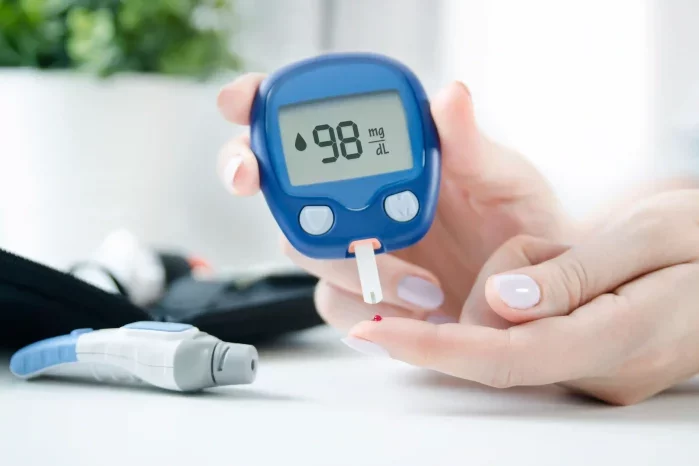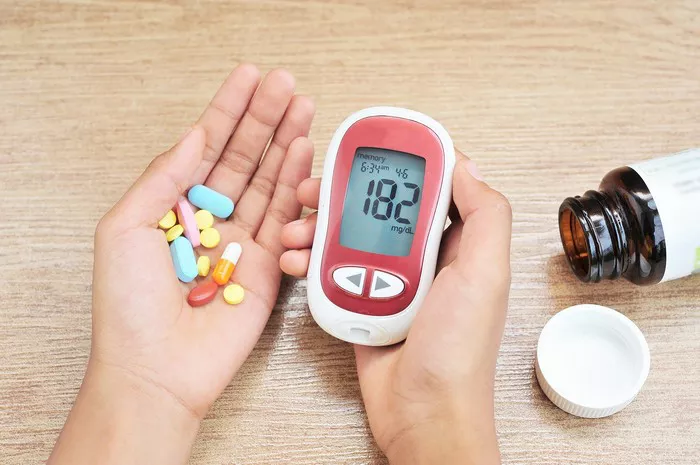Insulin resistance is a condition in which the body’s cells become less responsive to the hormone insulin, leading to impaired glucose absorption and elevated blood sugar levels. This condition is often a precursor to type 2 diabetes, and it is closely linked to obesity, metabolic syndrome, and other chronic health issues. One of the primary challenges people with insulin resistance face is losing weight, as the body’s inefficient use of insulin makes fat burning more difficult. However, achieving weight loss is a critical aspect of managing insulin resistance and improving overall health.
This article will delve into what insulin resistance is, how Insulin Resistance affects weight loss, the challenges it poses, and strategies to overcome these hurdles. We will also explore the science behind insulin resistance and the importance of adopting specific dietary, lifestyle, and medical interventions to promote sustainable weight loss.
What Is Insulin Resistance?
Insulin is a hormone produced by the pancreas that allows the body’s cells to absorb glucose (sugar) from the bloodstream and use it for energy. In a healthy individual, insulin binds to receptors on the surface of cells, signaling them to take in glucose. However, in people with insulin resistance, the cells become less responsive to insulin, which forces the pancreas to produce more insulin to compensate.
As insulin resistance worsens, the pancreas may eventually struggle to keep up with the demand, leading to higher blood sugar levels. Over time, this can result in prediabetes or type 2 diabetes. Insulin resistance is also linked to other metabolic disorders such as obesity, cardiovascular disease, and polycystic ovary syndrome (PCOS).
The Connection Between Insulin Resistance and Weight Gain
Insulin resistance and weight gain often go hand in hand. Elevated insulin levels, a hallmark of insulin resistance, promote fat storage, particularly in the abdominal area. When insulin levels are consistently high, it becomes more difficult for the body to burn fat, as insulin signals the body to store excess glucose as fat rather than using it for energy.
This creates a vicious cycle: the more weight a person gains, the more insulin resistant they become, and the more insulin resistant they become, the more weight they gain. This cycle is further exacerbated by factors such as poor diet, lack of physical activity, and genetic predisposition.
How Does Insulin Resistance Affect Weight Loss?
Weight loss becomes particularly challenging for individuals with insulin resistance due to several physiological factors:
Increased Fat Storage: High insulin levels make it difficult for the body to break down fat stores for energy. Instead, the body prioritizes storing excess glucose as fat, making weight loss harder.
Persistent Hunger: Insulin resistance can cause fluctuations in blood sugar levels, leading to frequent hunger pangs and cravings, particularly for carbohydrate-rich foods. This can make it challenging to maintain a calorie deficit necessary for weight loss.
Slower Metabolism: As insulin resistance progresses, the body’s metabolism may slow down, further complicating efforts to lose weight. A sluggish metabolism means that the body burns fewer calories at rest, making it harder to achieve a caloric deficit.
Inflammation: Insulin resistance is associated with chronic low-grade inflammation, which can interfere with the body’s ability to metabolize fat and lose weight. Inflammation is thought to play a role in the development of obesity and other metabolic disorders.
Despite these challenges, weight loss is achievable for individuals with insulin resistance, and it can significantly improve insulin sensitivity and overall metabolic health. The key is to adopt a targeted approach that addresses the underlying hormonal imbalances and focuses on sustainable lifestyle changes.
Effective Strategies for Insulin Resistance Weight Loss
Losing weight with insulin resistance requires a multifaceted approach that includes dietary changes, physical activity, stress management, and, in some cases, medication. Here are some evidence-based strategies that can help individuals with insulin resistance achieve weight loss:
1. Adopt a Low-Carbohydrate, High-Fiber Diet
Dietary changes are the cornerstone of managing insulin resistance and promoting weight loss. One of the most effective strategies is to reduce the intake of refined carbohydrates, which can cause rapid spikes in blood sugar and insulin levels. Instead, focus on a low-carbohydrate, high-fiber diet that helps stabilize blood sugar and improve insulin sensitivity.
Limit Simple Carbohydrates: Foods such as white bread, sugary snacks, and sugary beverages should be minimized or avoided altogether. These foods cause rapid increases in blood sugar and insulin levels, exacerbating insulin resistance.
Increase Complex Carbohydrates and Fiber: Complex carbohydrates found in whole grains, legumes, vegetables, and fruits release glucose more slowly into the bloodstream, preventing sharp spikes in insulin. Fiber-rich foods, in particular, can help improve insulin sensitivity and promote feelings of fullness, aiding in weight loss.
Incorporate Healthy Fats: Healthy fats, such as those found in olive oil, avocados, nuts, and fatty fish, can help regulate insulin levels and support weight loss. Including healthy fats in meals can also promote satiety and prevent overeating.
Moderate Protein Intake: A moderate amount of lean protein from sources like chicken, fish, beans, and tofu can help maintain muscle mass while promoting weight loss. Protein also helps stabilize blood sugar levels and reduce hunger.
2. Engage in Regular Physical Activity
Exercise plays a crucial role in managing insulin resistance and supporting weight loss. Physical activity helps the body use glucose more efficiently and can improve insulin sensitivity even without significant weight loss.
Aerobic Exercise: Activities like walking, jogging, swimming, and cycling can help burn calories and reduce visceral fat (the fat stored around the organs), which is closely associated with insulin resistance.
Resistance Training: Strength training exercises, such as weightlifting or bodyweight exercises, build muscle mass, which increases the body’s ability to use glucose and improves insulin sensitivity. Muscle tissue is more metabolically active than fat tissue, meaning it burns more calories at rest.
High-Intensity Interval Training (HIIT): HIIT involves short bursts of intense exercise followed by brief rest periods. This type of training has been shown to improve insulin sensitivity and support fat loss, particularly in individuals with insulin resistance.
Consistency is key when it comes to exercise. Aim for at least 150 minutes of moderate aerobic activity or 75 minutes of vigorous activity each week, combined with two or more days of resistance training.
3. Manage Stress Levels
Chronic stress can contribute to insulin resistance by increasing the production of cortisol, a hormone that promotes fat storage, particularly in the abdominal area. Elevated cortisol levels can also increase cravings for high-sugar, high-fat foods, making it harder to stick to a healthy diet.
Mindfulness and Relaxation Techniques: Practices such as meditation, deep breathing, and yoga can help lower cortisol levels and reduce the impact of stress on insulin resistance.
Adequate Sleep: Sleep plays a vital role in regulating insulin and blood sugar levels. Aim for at least 7-9 hours of sleep per night to support metabolic health and weight loss efforts.
4. Consider Intermittent Fasting
Intermittent fasting (IF) is an eating pattern that alternates between periods of eating and fasting. Some studies suggest that intermittent fasting can improve insulin sensitivity and promote weight loss by allowing the body to use stored fat for energy during fasting periods.
Popular intermittent fasting methods include the 16:8 method (fasting for 16 hours and eating within an 8-hour window) and the 5:2 method (eating normally for five days and restricting calories to 500-600 on two non-consecutive days). However, it’s important to consult with a healthcare provider before starting any fasting regimen, especially if you have insulin resistance or other metabolic conditions.
5. Use Medications When Necessary
In some cases, dietary and lifestyle changes alone may not be enough to manage insulin resistance and achieve weight loss. Medications that improve insulin sensitivity or regulate blood sugar levels may be prescribed to help with weight loss efforts. These include:
Metformin: Metformin is a commonly prescribed medication for insulin resistance and type 2 diabetes. It works by reducing glucose production in the liver and improving the body’s sensitivity to insulin. Metformin has also been shown to aid in weight loss for some individuals with insulin resistance.
GLP-1 Agonists: These medications, such as liraglutide and semaglutide, mimic a hormone called glucagon-like peptide-1 (GLP-1), which helps regulate blood sugar levels and promotes satiety. They are often used to treat type 2 diabetes and can also support weight loss.
SGLT2 Inhibitors: Sodium-glucose cotransporter-2 (SGLT2) inhibitors are a class of medications that help the kidneys remove excess glucose from the bloodstream through urine. This process can lead to improved blood sugar control and weight loss.
Medications should always be used under the guidance of a healthcare provider, and they are typically most effective when combined with healthy lifestyle changes.
The Benefits of Insulin Resistance Weight Loss
Losing weight when you have insulin resistance can significantly improve your metabolic health and reduce your risk of developing type 2 diabetes and other complications. Some of the key benefits include:
Improved Insulin Sensitivity: Weight loss can reduce insulin resistance, allowing the body to use insulin more effectively. This helps lower blood sugar levels and reduces the risk of developing type 2 diabetes.
Reduced Visceral Fat: Weight loss, particularly in the abdominal area, can decrease visceral fat, which is closely linked to insulin resistance and inflammation. Reducing visceral fat improves overall metabolic health.
Lower Blood Pressure and Cholesterol: Insulin resistance is often associated with high blood pressure and elevated cholesterol levels. Weight loss can help improve these markers, reducing the risk of heart disease and stroke.
Enhanced Energy Levels: As insulin sensitivity improves and blood sugar levels stabilize, individuals may experience increased energy levels and improved physical performance.
See also: How Do I Get Rid of Insulin Resistance?
Conclusion
Insulin resistance weight loss can be challenging due to the hormonal imbalances that promote fat storage and hinder fat burning. However, with a targeted approach that includes dietary changes, regular physical activity, stress management, and, when necessary, medication, individuals with insulin resistance can achieve sustainable weight loss and improve their overall health. By focusing on long-term lifestyle changes rather than quick fixes, it is possible to break the cycle of insulin resistance and regain control over your health.
Related topics:
Is Fruit Bad for Insulin Resistance?



























